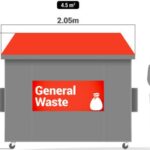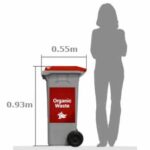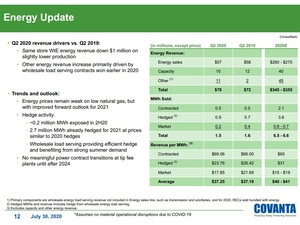Consequences of Load Strategy
Energy Disrupter
Fatigue is a slow, often undetected damaging process of material under iterating mechanical loads, temperatures and other impacts.
- <img src="http://biomassmagazine.com/uploads/posts/magazine/2021/11/resize/Cont1-Streetz1_16373346619728-300×300-noup.jpg" title="Fragments of failure at a major pellet plant breakdown.
PHOTO: Jörg Langenhuysen</small>”> - <img src="http://biomassmagazine.com/uploads/posts/magazine/2021/11/resize/Cont1-Streetz2_16373346620402-300×300-noup.jpg" title="A breakdown due to fatigue—the pellet mill door turned upside down as a result of a broken flange and die.
PHOTO: Jörg Langenhuysen</small>”>
ADVERTISEMENT
Outages happen frequently in wood pelleting, and the reasons are manifold. Depending on the production strategy, pellet producers can increase the production rate—even above nameplate capacity of the pellet mill—or prolong maintenance intervals with a low wear strategy. Some Canadian pellet mill plants operate their 3.5-ton-per-hour pellet mills at a production rate of approximately 5 tons per hour. The result is a production volume matching the nameplate capacity of the pellet plant, but also planned, biweekly, 12-hour downtimes for maintenance, as well as a shell service life of sometimes only a few hundred operating hours. Another extreme is a Swiss wood pellet plant with bearings service life of 10,000 operating hours and close to zero unplanned downtimes. The shell service life is approximately 1,000 operating hours.
Many factors influence the production rate and service life of equipment, beginning with the initial raw material. Clean, homogenous softwood fiber is the ideal raw material for a long shell service life and high production rates. The load on the rollers is low and the throughput high, due to the soft fiber. Depending on the sourcing area, however, a mix with hardwood, recovered industrial wood or storm debris changes the raw material mix. Besides the tree species, bark and dirt have a huge effect. In the growth phase of a tree, the bark absorbs particles from the ground, such as stones, sand and soil. In some cases, the forests are contaminated with metal scrap that ends up in the woody biomass. Bike parts, brass, cans and drums are some common contaminants.
The first step in wood preparation for pellet production is often the wet hammermill, followed by the dryer. Worn hammers and sifters, weak magnets and an uneven material distribution in the dryer cause uneven prepared material for the dry hammermill and the mixer. With new approaches to drying, such as steam explosion, costs decrease significantly, while the quality of the material mix improves. The efficiency of pelletization is highly dependent on the preceding steps. A pellet mill’s spare part service life, production rate and power consumption are influenced by the material mix and preparation. The downstream processes in wood pelleting are affected by pellet quality. Density, moisture, length and bonding influence fines in the bagging process or bulk handling.
There are ways to improve overall performance with the help of third parties. An original equipment manufacturer (OEM) independent pellet plant audit overcomes blindness to operational flaws and can assist with new ideas, innovation and to provide plant management with some food for thought.
A Door Upside Down
Sometimes, even the best advice is wasted, as breakdowns are not always related to raw material, production rate, maintenance and operations. The wood pellet industry is used to all kinds of breakdowns—roller bearings break due to shocks, dirt, wear or lack of lubrication; main bearings corrode or absorb too many shocks and break; roller shells wear off and crack due to the material mix and load. Additionally, shells cause trouble when the measurements are off-spec. Even dies break from time to time, often causing longer outages. All these are glitches, as mending is often brief. But nowadays, disrupted supply chains affect delivery times, and thus, downtimes.
Some breakdowns are less frequent, but they cause much bigger damages. One example is a major breakdown that occurred at an Austrian wood pellet plant—the flange broke due to fatigue. As a result, the die was unguided and also broke. With the broken flange and die, the pellet mill door turned upside down. The mixer, lifting equipment, door and door clamp were also damaged beyond repair due to the movement of the door. The motor went into overload and shut off. The shear pins were also intact, as the broken flange was rotating freely. Luckily, there was no one injured.
The pellet mill had just underwent service shortly before the malfunction. This underlines the lack of traceability of material fatigue. The wood pellet producer is facing a damage of approximately 68,000 euros (nearly $70,000) in parts, plus installation. The company decided to replace the pellet mill.
Main Bearing Breakdown
Main bearings rarely break. When they do, it is often due to corrosion, massive shocks or dirt particle entry. There has been a case of main bearing failures due to interrupted production in a U.S.-based wood pellet plant. The available raw material was not sufficient for the continuous operation of all pellet mills. As a result, a different pellet mill was shut off every two weeks. Condensed water entered the main bearing and caused corrosion, finally leading to a bearing failure with all pellet mills.
Coming back to the initial operation decision, a plant manager can either decide to increase production rate and accept a higher degree of wear on the equipment, or go easy on the equipment and improve maintenance. A high load strategy requires more frequent planned maintenance days, whereas a low load strategy requires good planning, special care and experienced workforce. Neither of the strategies will prevent fatigue, and nor is one strategy more likely to cause major malfunctions when willingly chosen and consequences accepted.
Author: Holger Streetz
COO and Board Member, Bathan AG
h.streetz@bathan.ch
















